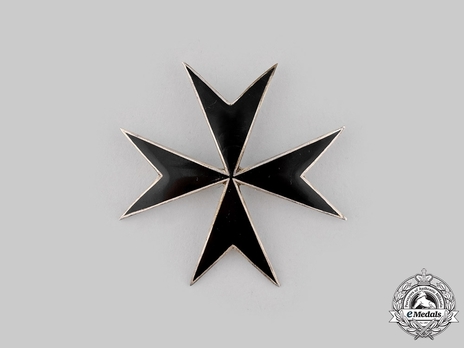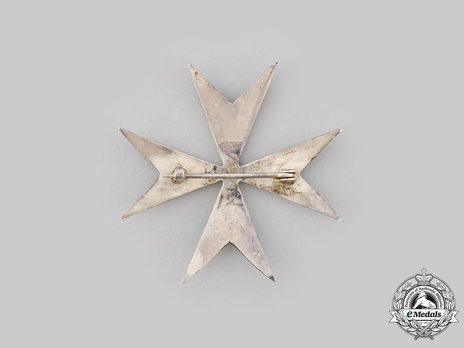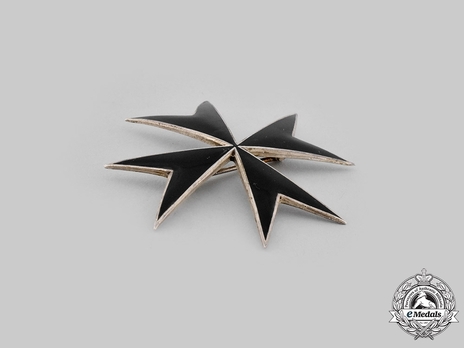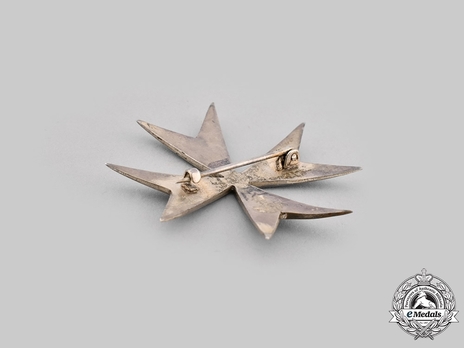Freikorps Detachment von Randow German Knight’s Cross, I Class
CATEGORY: Version
SKU: 03.WMR.0438.104.01.000
Estimated market value:




Estimated market value:
Constructed of silvered bronze with enamels, consisting of a Maltese Cross, the obverse with black enameled arms, the reverse with a vertical pinback meeting a flat wire catch, unmarked, measuring 46.45 mm (w) x 47.28 mm (h), weighing 8.5 grams, in extremely fine condition.
The Freikorps Detachment von Randow German Knight’s Cross was established and designed by Captain Alfred von Randow in March 1919. The cross was primarily conferred upon members of the Volunteer Detachment von Randow, a unit that was formed in January 5, 1919 and tasked with establishing security in the Baltic region.
The award is also known as "Randow Cross".
The cross was established to strengthen comradeship in the unit and to serve as a reminder of days gone by.
The cross was originally established in two grades, the standard Knight’s Cross and a Breast Star in Silver. The Knight’s Cross was issued for four months of meritorious service, and the Breast Star in Silver was issued for six months of meritorious service.
The first award ceremony took place on April 12, 1919, just nine days after the first batch of crosses had been delivered. The award was issued together with a certificate.
The Breast Star in Silver was only awarded to four officers: Captain Alfred von Randow, detachment adjutant Leutnant G. Negendank, and commanders of Northern and Southern groups of the detachment, Hauptmann Meyer and Hauptmann Ebert.
In May 1919, two grades were added: the Breast Star in Gold and the Grand Cross. The standard Knight’s Cross was divided into grades, I and II Class.
The awards that were conferred upon combatants featured crossed swords.
The award was primarily awarded between 1919 and 1923, but continued to be awarded sporadically until 1928.
The cross was manufactured by various German companies. The quadrilateral eight-point cross is enamelled in black and it varies in size depending on the manufacturer.
The Grand Cross was issued with the Breast Star in Gold to Commanders who demonstrated exceptional merit.
The I Class Cross was worn on the left breast pocket attached by a vertical pin.
The II Class Cross was worn on a black ribbon with a clasp. The clasp had the shape of crossed swords and a crown.
The Breast Star in Silver and the Breast Star in Gold were worn on the tunic pocket.
The Grand Cross was worn as a neck decoration.
The award was discontinued following the NSDAP's seizure of power in 1933.

Comments
Sign in to comment and reply.


Scroll Top